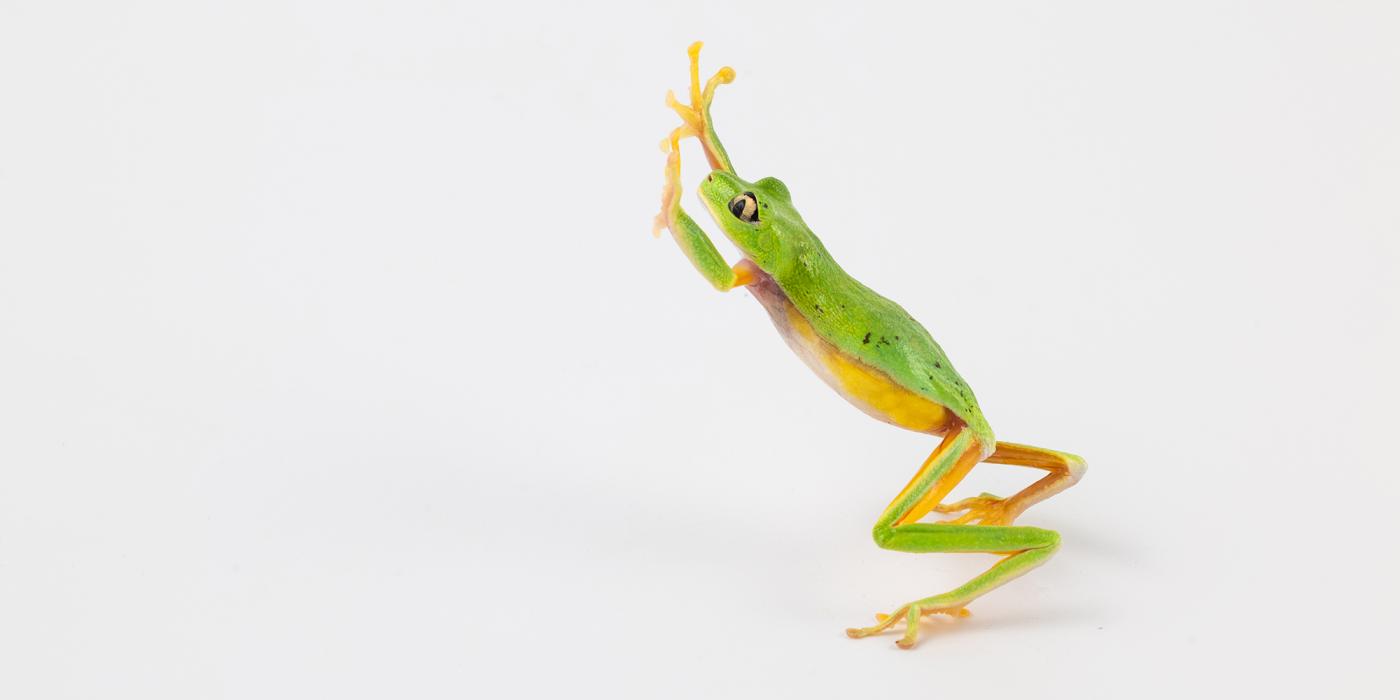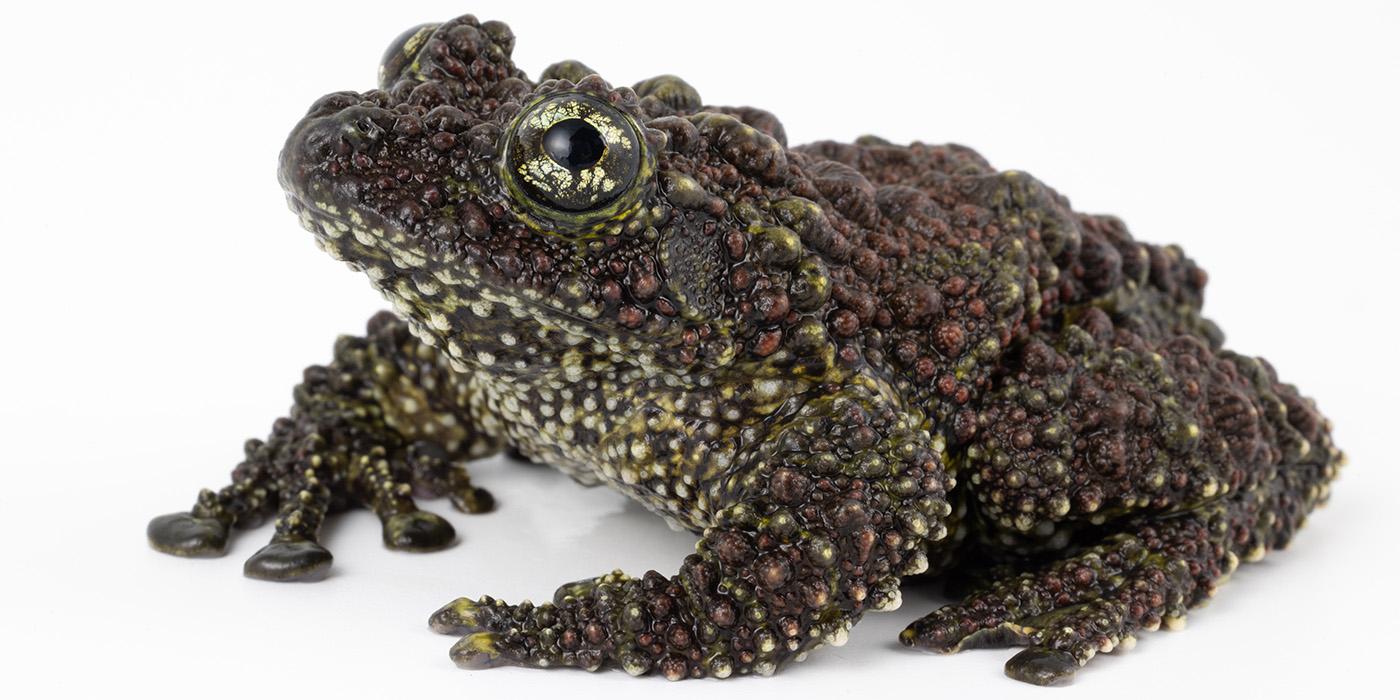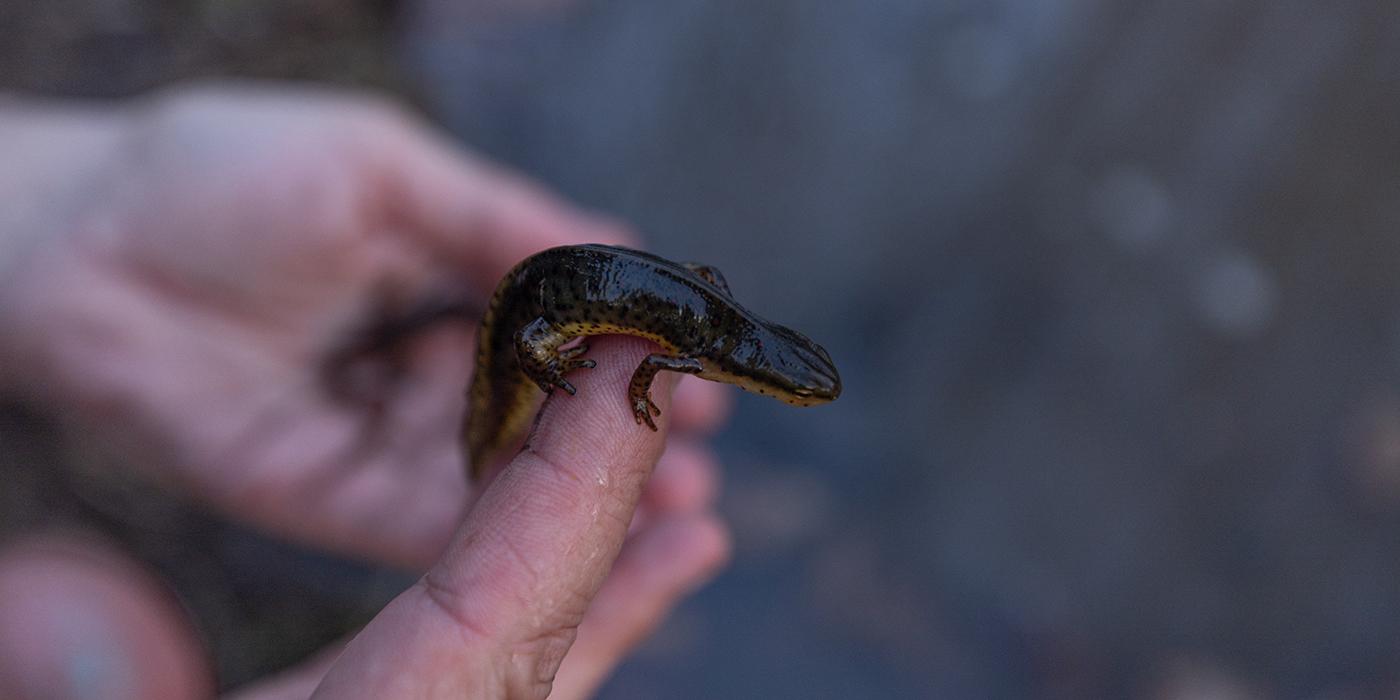Featured Creature: Black Tree Monitor
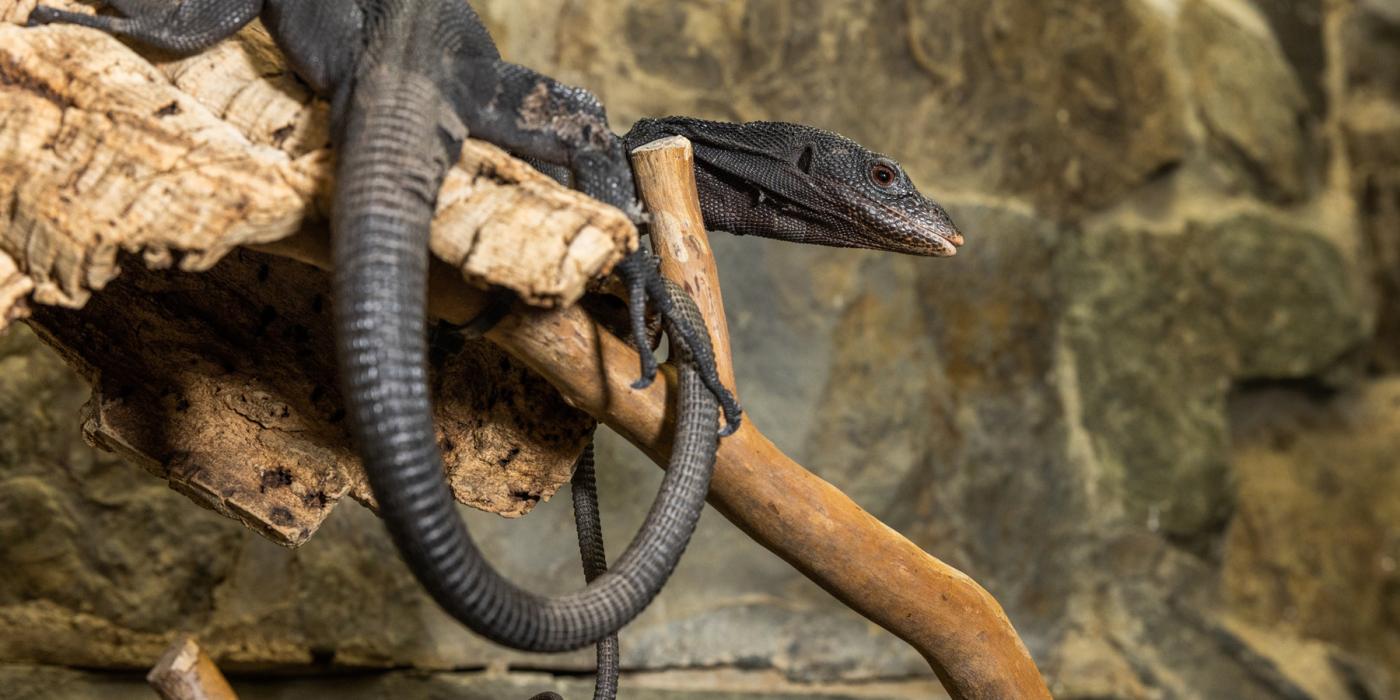
Not all lizards are brightly colored! Black tree monitors blend in with shadows cast by dense leaves and branches in the tropical forests where they live. Get to know these intelligent, elusive reptiles in this Q&A with Matt Evans, assistant curator of Reptile Discovery Center.
What are black tree monitors, and where do they live?
Black tree monitors are a unique species of monitor lizard. They look almost prehistoric. They have slender bodies and long tails which make up 2/3 of their total body length. When they are little, these monitors are grayish with green and yellow spots that break up their pattern and help them completely blend in. As adults, they’re solid black and between 3 and 4 feet long. Males are a little bigger than females. We have an adult male here at Reptile Discovery Center.
Black tree monitors live mostly up in the trees of tropical forests and mangrove swamps. They like to be perched up high, where they can check out their whole environment. They are intelligent, have great vision and are very fast.
These monitors are only found on the Aru Islands, which are part of Indonesia and located just off the coast of New Guinea. There are a few different species of tree monitors besides black tree monitors. They are all found on separate islands throughout the Indonesian archipelago.
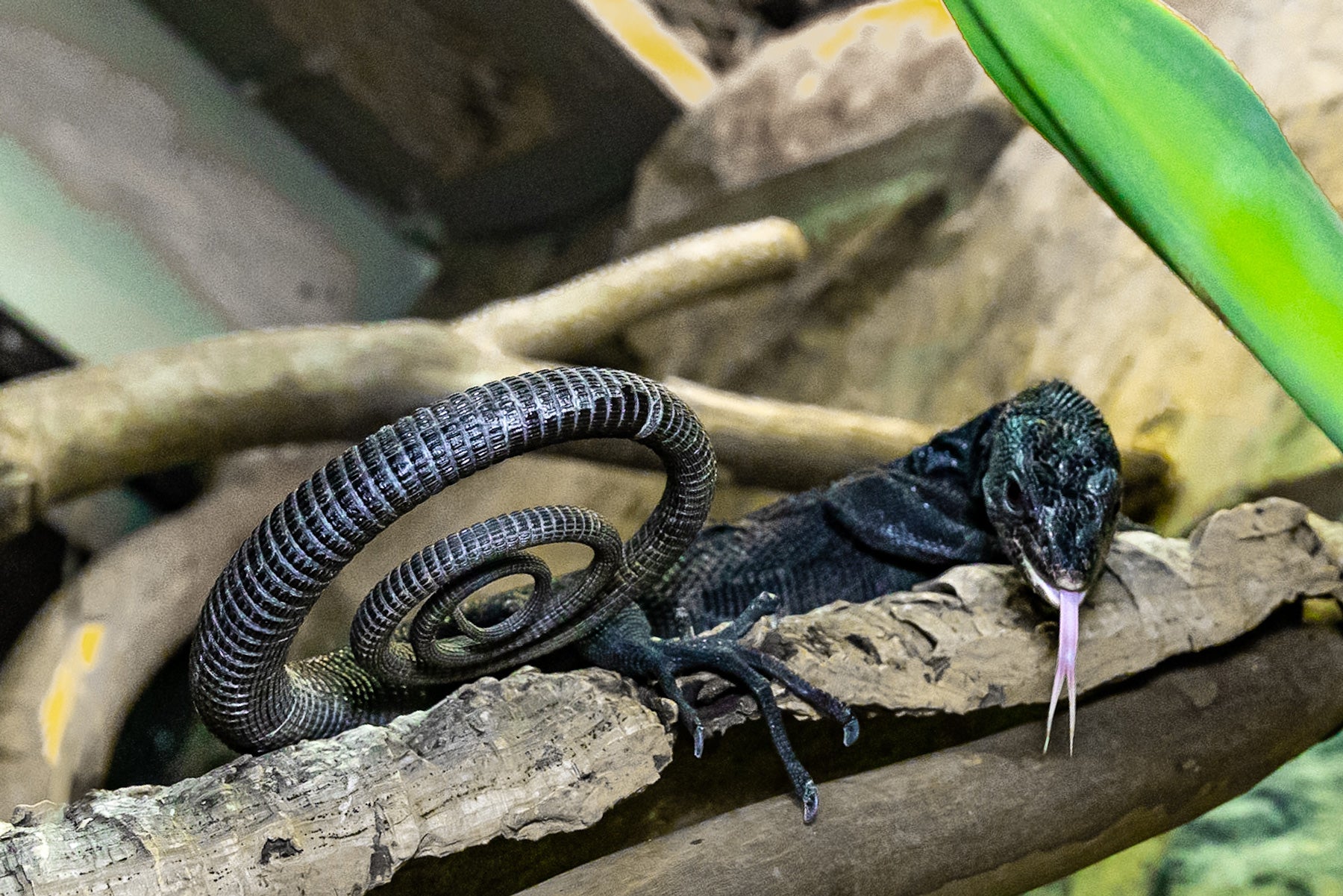
Can you tell us more about their long tails?
Tree monitors are different from many other monitor species. Their tails are prehensile, meaning they can wrap around and grasp onto things. Most monitors whip around and thrash their tails with accuracy as a defense mechanism. Some water monitors use their tails for swimming. But tree monitors protect their tails and use them as an extra limb. Their long tails also help spread out their body weight and provide balance, as these lizards move quickly through the tree canopy.
Do they have any other adaptations that help them live in trees?
They have elongated limbs and toes, and very sharp, long claws. They also have some adhesive-like padding on the center of their feet. All of this helps to give them support and makes them very skilled climbers. They chase down prey and hunt way up in the trees, so they need to have great balance and be able to move around easily.
They will also run and jump from trees onto the ground or into the water to escape predators, like large snakes and birds of prey. They’re high energy and very athletic.
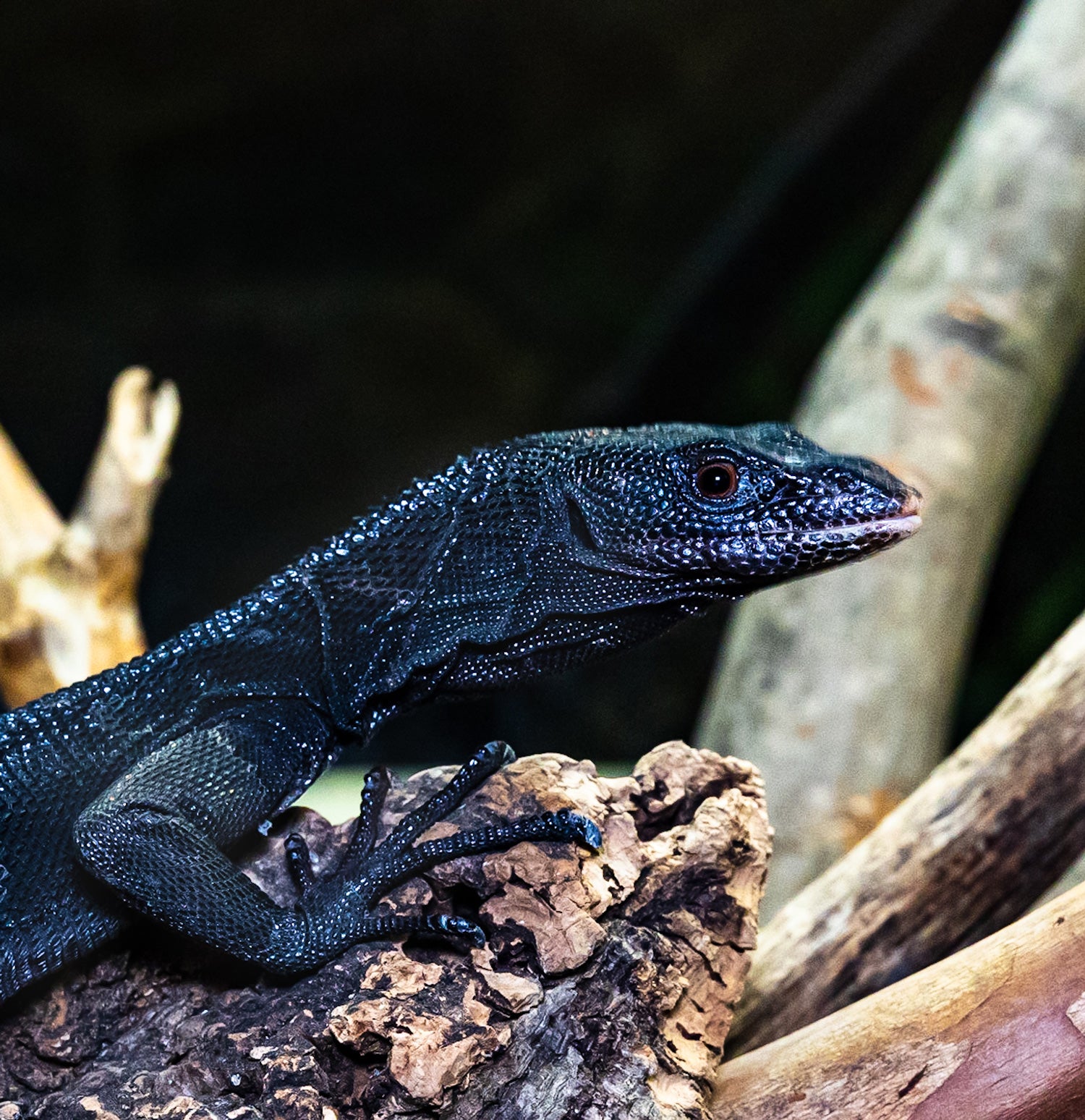
What do black tree monitors eat?
These lizards are fast, and they take down their prey quickly. They have long, sharp teeth, so they grab, shake, rip and swallow anything they attack in the blink of an eye. They feed mostly on small invertebrates. They also eat tiny mammals, amphibians, and small birds or eggs.
Black tree monitors can be skittish, but they do have a lot of personality. Our black tree monitor will come right down to us and take food off tongs. He seems to enjoy chasing down crickets and roaches as well. We feed him earth worms, mealworms and wax worms. We’ll also cut up hardboiled egg and give him pinkie (baby) mice and little chunks of beef. We try to vary his diet as much as possible. Providing him with live prey also offers some enrichment and exercise.
We mist his habitat daily to keep the humidity high and offer him a drink. A lot of lizards, especially arboreal lizards found in tropical areas, don’t have to worry about finding a water source because it rains all the time. So, they are very accustomed to drinking from rain or mist.
Do tree monitors live alone?
Most monitors are solitary, and there’s evidence that black tree monitors become territorial toward other males. They’ll rise on their hind legs and attack each other. Males tolerate females in their range during the breeding season. Females bury or hide their eggs somewhere warm where the eggs can incubate. Their nests are typically off the ground, like in an elevated termite mound, tree hole or decaying log. Mom will defend her hatchlings for a little while before they head out on their own.
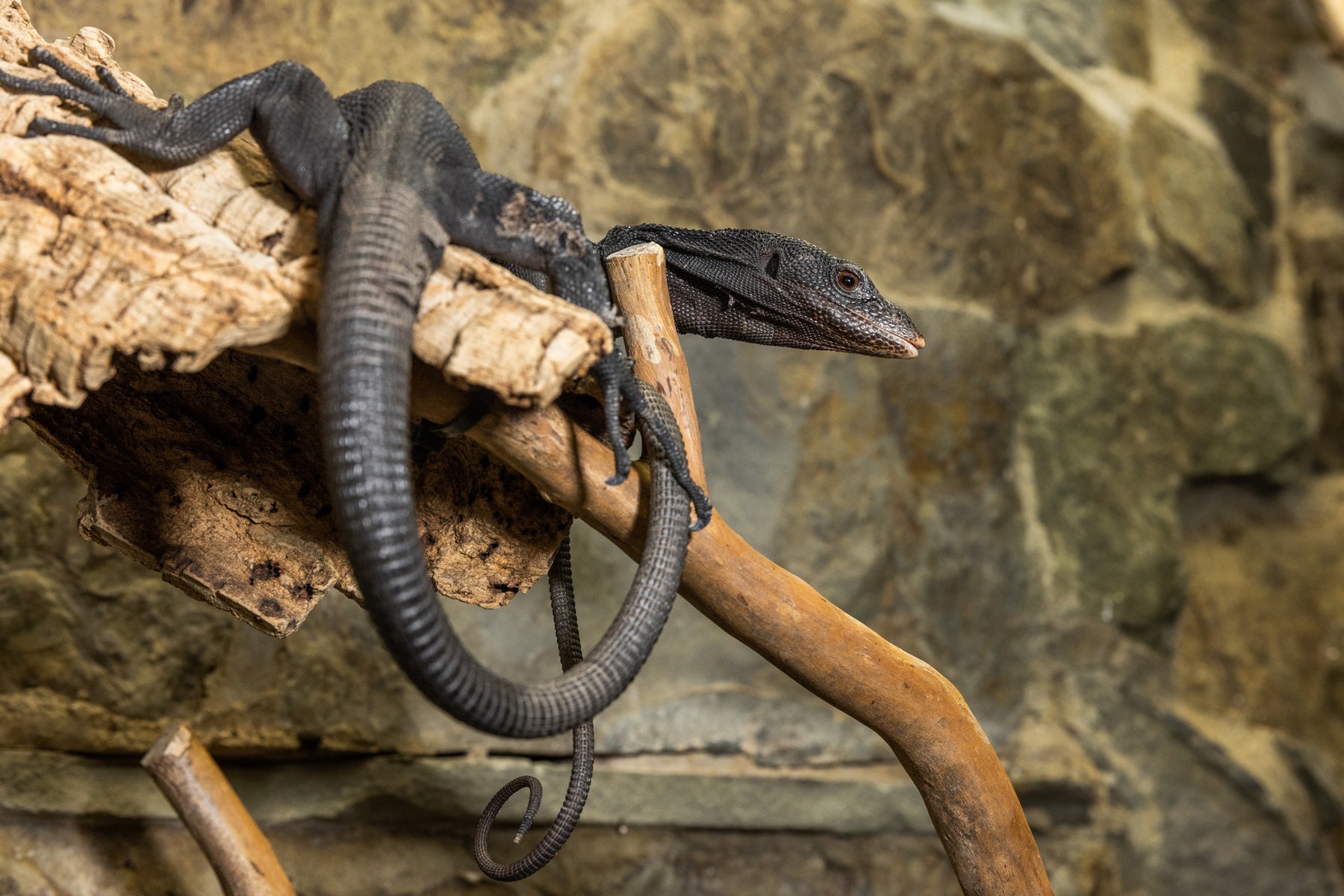
What’s next for our black tree monitor?
I’d love to try giving him puzzle feeders that he has to evaluate to get to food. Most monitor lizards hunt with just their mouths. They will bite and shove their mouths into crevices, if necessary. If their mouths don’t fit, a lot of reptiles will sit there waiting for hours or keep trying and trying using their heads and mouths. But black tree monitors can problem solve. They will use their limbs to pull food out of a hole, crevice, or hide that their head is too wide to fit into.
To make a puzzle feeder, we can take a big log and drill holes into the wood that are narrower and deeper than the width and length of the black tree monitor’s head. Then, we stuff food deep inside. We’ve done this with our green tree monitors as well. They come over to investigate the log, smell it and try to get their head in as far as they can. When that doesn’t work, it takes just a minute for them to figure out how to use their forelimbs to pull out the food. It gets them to use different parts of their body, move around and think.
What do you enjoy most about working with our black tree monitor?
There is still a lot that we don’t know about their natural history, because it’s very difficult to observe them in the wild. I love that there are creatures out there that we don’t have figured out. It gives us opportunities to observe and learn more about them.
I think black tree monitors are also a good example of the complexity of reptiles. They have complex social behaviors, and they are highly intelligent They are very curious, active and love to explore their surroundings. You don’t always see that with other reptile species. They’re pretty unique.
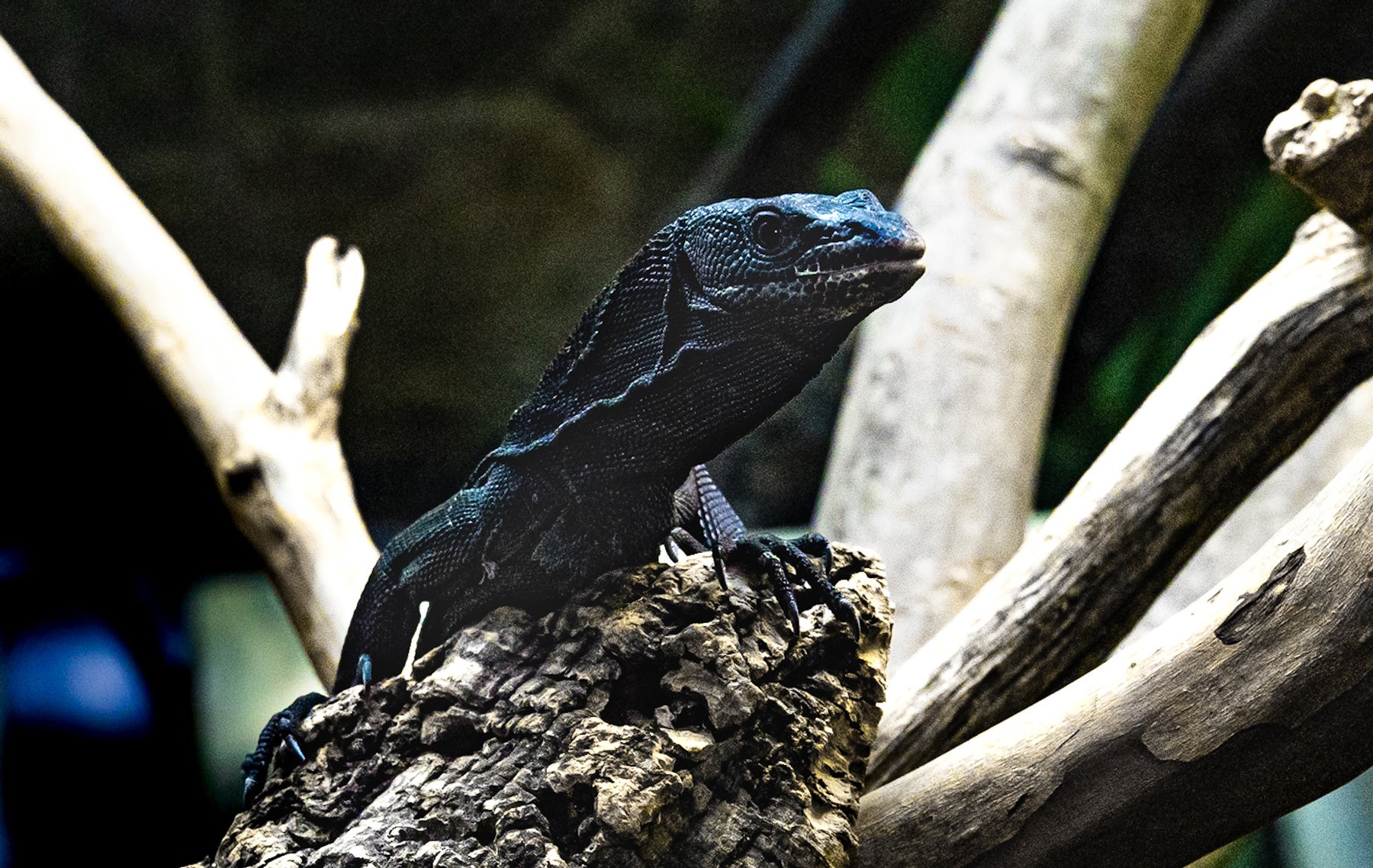
Do you have any tips for spotting our black tree monitor on exhibit?
Look up! A lot of people walk by and don’t see him, because he likes to be up high on his elevated perch. He climbs and goes everywhere. He can even scale the rockface in his exhibit. He’s perched and elevated a lot of the time, all the way at the top of his habitat.
Why is the black tree monitor’s story important?
The black tree monitor population is trending downward compared to its close relative, the green tree monitor, whose population is stable at the moment. At Reptile Discovery Center, we want to participate in building a sustainable and healthy population of black tree monitors for future generations. The black tree monitor in our care is part of a Species Survival Plan, or SSP — a managed conservation program established by the Association of Zoos and Aquariums. We’ll be looking for a genetically valuable female match for him in the future. This is a way we can help have a positive outcome on the black tree monitor’s future.
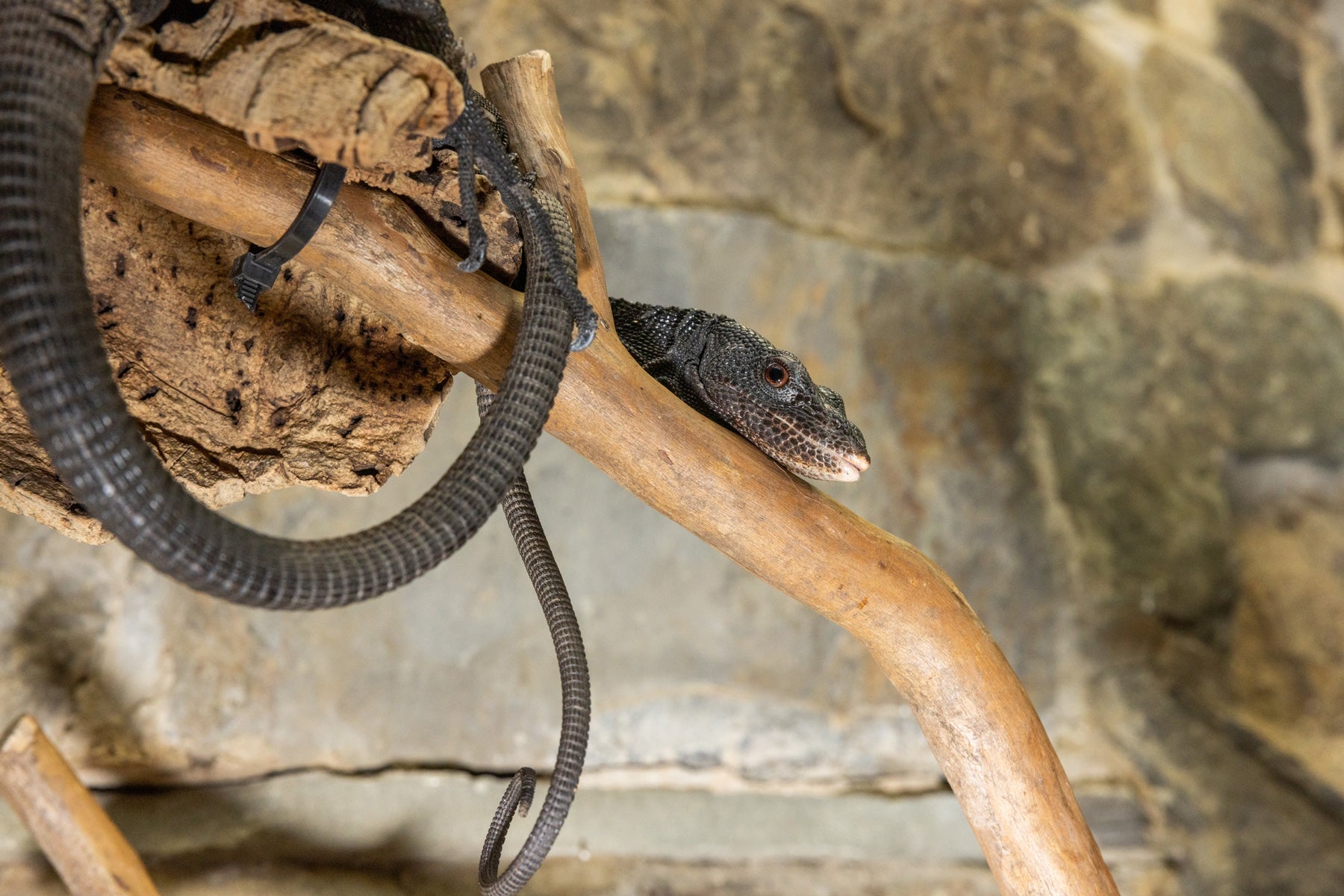
I want to help tree monitors! What can I do?
We don’t have a lot of data about black tree monitor populations in the wild, because it’s very difficult to survey for them. They stay well hidden, and they can hear and see us before we see them. But we know their habitat is shrinking, mainly due to agriculture and encroachment from other human activities. They may also be hunted and collected for the illegal wildlife trade.
To protect black tree monitors and other reptiles, it’s important to make smart choices when purchasing animals. If you want a reptile as a pet, always make sure you are choosing an animal that is bred in human care and has not been taken from the wild. You can also support groups and foundations that are working to preserve habitats in areas where tree monitors live.
Finally, you can share the black tree monitor’s story and inspire others to care about these incredible reptiles.
This story appears in the July 2022 issue of National Zoo News. Curious to know more about the residents of Reptile Discovery Center? Meet another monitor lizard in this feature on Komodo dragons, or check out other noteworthy news about the Zoo’s reptiles and amphibians!

